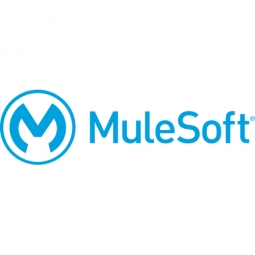公司规模
Large Corporate
地区
- Africa
国家
- South Africa
产品
- Mule ESB
技术栈
- Java
- Oracle ERP
- Oracle PeopleSoft Campus Solutions
实施规模
- Enterprise-wide Deployment
影响指标
- Productivity Improvements
- Digital Expertise
技术
- 应用基础设施与中间件 - API 集成与管理
适用行业
- 教育
适用功能
- 商业运营
用例
- 过程控制与优化
- 远程资产管理
服务
- 系统集成
关于客户
The University of the Witwatersrand, commonly known as Wits University, is one of South Africa's premier research universities. With over 30,000 active students at any time, and over 4,000 staff members, it is also one of the largest. The records of these students as well as historical records for alumni are managed by a central student system operated by the Computer Network Services (CNS) office of the university. CNS also develops, supports and maintains custom applications for all departments of the university including many that interface to the student system. The Wits student system performs many critical functions and has many touch points. The system maintains all student records including applicant data, offers of admissions, academic history, financial aid, graduation records, and letters and correspondences with students. Approximately 500 users directly access the student system.
挑战
The University of the Witwatersrand, one of South Africa's premier research universities, was faced with a required migration of their central student system, the most important system in the university. The university had implemented an Oracle-based Student System as part of a large Oracle ERP deployment. However, in 2007, the university received a notice from Oracle that their existing student system would be reaching end of life in 2013. After an evaluation of alternatives, the university decided upon Oracle’s PeopleSoft CampusSolutions as their new student system. To facilitate the move from the old Oracle system to Campus Solutions, CNS needed to split the Student and HR systems, which ran in one large Oracle instance. This required additional integration between the two Oracle products, Campus Solutions and other ancillary systems. Integration would be key to making the transition seamless.
解决方案
The university selected Mule ESB to decouple components and provide a reliable integration framework through the migration and beyond. Mule ESB was used as a central integration platform to integrate a number of systems with the existing Oracle ERP implementation. For example, it is used for transactional systems such as fees and receipting where it posts transaction on a queue and asynchronously empties this queue to the Oracle ERP system. It also manages credit and debit transactions, splitting credits from debits and delivering each to a different place. Outside of ERP-related use cases, Mule is also used for batch jobs, moving text files, and other uses within the university. Given the university’s positive experience with Mule, it was immediately a strong candidate for consideration as the integration layer for the migration project. Nonetheless, upon kicking off the new project in September 2010, CNS conducted an extensive evaluation of several alternatives. Ultimately Mule was selected as the best alternative.
运营影响

Case Study missing?
Start adding your own!
Register with your work email and create a new case study profile for your business.
相关案例.

Case Study
Revolutionizing Medical Training in India: GSL Smart Lab and the LAP Mentor
The GSL SMART Lab, a collective effort of the GSL College of Medicine and the GSL College of Nursing and Health Science, was facing a challenge in providing superior training to healthcare professionals. As clinical medicine was becoming more focused on patient safety and quality of care, the need for medical simulation to bridge the educational gap between the classroom and the clinical environment was becoming increasingly apparent. Dr. Sandeep Ganni, the director of the GSL SMART Lab, envisioned a world-class surgical and medical training center where physicians and healthcare professionals could learn skills through simulation training. He was looking for different simulators for different specialties to provide both basic and advanced simulation training. For laparoscopic surgery, he was interested in a high fidelity simulator that could provide basic surgical and suturing skills training for international accreditation as well as specific hands-on training in complex laparoscopic procedures for practicing physicians in India.

Case Study
IoT platform Enables Safety Solutions for U.S. School Districts
Designed to alert drivers when schoolchildren are present, especially in low-visibility conditions, school-zone flasher signals are typically updated manually at each school. The switching is based on the school calendar and manually changed when an unexpected early dismissal occurs, as in the case of a weather-event altering the normal schedule. The process to reprogram the flashers requires a significant effort by school district personnel to implement due to the large number of warning flashers installed across an entire school district.

Case Study
Implementing Robotic Surgery Training Simulator for Enhanced Surgical Proficiency
Fundacio Puigvert, a leading European medical center specializing in Urology, Nephrology, and Andrology, faced a significant challenge in training its surgical residents. The institution recognized the need for a more standardized and comprehensive training curriculum, particularly in the area of robotic surgery. The challenge was underscored by two independent studies showing that less than 5% of residents in Italian and German residency programs could perform major or complex procedures by the end of their residency. The institution sought to establish a virtual reality simulation lab that would include endourological, laparoscopic, and robotic platforms. However, they needed a simulator that could replicate both the hardware and software of the robotic Da Vinci console used in the operating room, without being connected to the actual physical console. They also required a system that could provide both basic and advanced simulation training, and a metrics system to assess the proficiency of the trainees before they performed surgical procedures in the operating theater.

Case Study
Edinburgh Napier University streamlines long-distance learning with Cisco WebEX
• Geographically dispersed campus made in-person meetings costly and inconvenient.• Distance-learning programs in Malaysia, India, and China required dependable, user-friendly online tools to maximize interaction in collaborative workspaces.• Virtual learning environment required a separate sign-in process, resulting in a significant administrative burden for IT staff and limited adoption of collaboration technology.

Case Study
8x increased productivity with VKS
Before VKS, a teacher would spend a lot of time showing a group of 22 students how to build a set of stairs within a semester of 120 hours. Along with not leaving the teacher much time to provide one-on-one support for each student to properly learn carpentry, it also left a considerable amount of room for error. Key information would be misinterpreted or lost as the class was taught in the typical show-and-tell way.

Case Study
Scalable IoT Empowering GreenFlex's Sustainable Growth
GreenFlex, a company that supports sustainable development, decarbonization, and energy efficiency, faced several challenges in its quest to expand its business. The company needed to deploy a robust and sustainable IoT technology to support its growth. It was crucial for them to monitor and control devices at customer sites in a safe and reliable manner. They also needed to integrate devices across a range of communication protocols and gather and act on data to meet efficiency targets. GreenFlex had previously built IoT capabilities into its digital platform, GreenFlexIQ, to monitor and manage customer sites remotely. However, they soon realized that they needed a new platform to support their ambitions. They needed a platform that could scale to connect more devices for production management and make it easier for the operations team to manage devices in the field.







